| Image | Subject
/ Title | The image explained | Links on this . . . |
 | Fault tolerant
Quantum Computers conference
Physics World
| On 5—6 June 2024, I was in the City of London for Economist Impact’s Commercialising Quantum 2024 conference. Held in a shiny new skyscraper in Bishopsgate, the technology being discussed felt as new and exciting as the venue itself.
As someone who was taught quantum mechanics well before the second quantum revolution, I felt more akin to the ancient churches that I walked past to get there – a vestige of a different era.
| Fault tolerant Quantum Computers conference
|
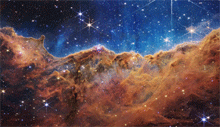 | James Webb Telescope
First images
Physics World
| ESA director general Josef Aschbacher : “We have an observatory that is excellent shape,” JWST project manager Bill Ochs from the Goddard Space Flight Center noted. “When I look at these images I see dedication, personal sacrifice, passion and all the individuals who have worked on this mission”
The JWST is a collaboration between NASA, the European Space Agency and the Canadian Space Agency. “These first images and spectra from [the JWST] are a huge celebration of the international collaboration that made this ambitious mission possible,”
It is expected that the JWST will continue observations for at least two decades
| First James Webb images
|
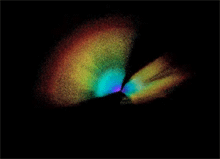 | Sloan Digital Sky Survey
Quantum to Cosmos
Perimeter Institute
| Astrophysicists release largest 3D map of the universe ever created : The Sloan Digital Sky Survey has filled in 11 billion years in our picture of the universe, providing “some of the most substantial advances in cosmology in the last decade,” according to Perimeter’s Will Percival
Also you can take the guided tour link to the right, of Perimeter's Quantum to Cosmos :
| 3D tour of the universe
Quantum to Cosmos
|
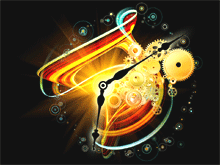 | Quantum tunnelling time
Quantum clock : rotating atomic spins have been used to measure the time it takes for quantum tunnelling to occur
Physics World
| The time it takes for an atom to quantum-mechanically tunnel through an energy barrier has been measured by Aephraim Steinberg of the University of Toronto and colleagues
The team observed ultracold atoms tunnelling through a laser beam, and their experiment provides important clues in a long-standing mystery in quantum physics
Quantum tunnelling involves a particle passing through an energy barrier despite lacking the energy required to overcome the barrier, as required by classical physics
The phenomenon is not fully understood theoretically, yet it underpins practical technologies ranging from scanning tunnelling microscopy to flash memories.
| Quantum tunnelling time measured
|
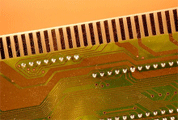 | Quantum computing
Scalable silicon IC qubit quantum computer architecture
Physics World
| Researchers at TU Delft and University of New South Wales have designed a scalable quantum computing architecture based on widely used complementary metal–oxide–semiconductor (CMOS) manufacturing techniques
The approach encodes information in the spins of individual electrons confined in quantum dots : Using minimum feature sizes that are achievable now or anticipated in the near term, the researchers propose a circuit geometry that would result in individual 2D modules of 480 qubits each
Thousands of these modules could be combined, producing a computer containing millions of interacting qubits
| Quantum computer in silicon very close
|
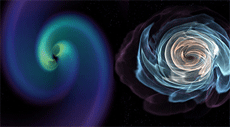 | Gravity waves
Hubble's constant measured
Heavy particles production
Physics World
| Astronomers have made one of the biggest breakthroughs of the decade after detecting both gravitational waves and gamma rays from the merger of two neutron stars
Announced today at a co-ordinated set of media briefings in Washington DC, London, and elsewhere, the detection was made on 17 August, with the gravitational waves spotted by the LIGO–Virgo collaboration and the gamma rays picked up by the Fermi Gamma-ray Space Telescope
The observations prompted astronomers to point dozens of different telescopes and detectors around the world, and in space, at the origin of the signals in a distant galaxy
Together, these facilities captured radiation from the aftermath of the merger across the electromagnetic spectrum from gamma rays to radio waves
| Neutron stars collision gives a wealth of physics
|
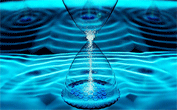 | Wrinkles in time
Time crystals created
Physics World
| Two independent groups of physicists in the US have built what they describe as "time crystals" — systems of interacting particles that are driven by a periodic force but which appear to oscillate autonomously, the researchers report that their systems seem to break what is known as discrete time symmetry
To create their time crystal, Monroe and colleagues used trapped ions. They exposed around a dozen strongly interacting ytterbium-ion spins to a sequence of periodic laser pulses. These pulses drove the system at a particular rate, while additional laser beams added randomness to each spin's rotation — creating disorder that prevented the system from heating up
The researchers found that the oscillation period of the spins remained at the expected, fixed value — and, crucially, that it did so even when the pulse period changed slightly. “That is the smoking gun,” says Monroe. “It is a property of the system, like the fixed lattice of a crystal”
| Time crystals built in the lab
|
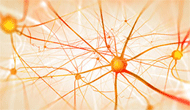 | Consciousness
Brain function linked to entropy
Physics World
| Consciousness appears to arise naturally as a result of a brain maximizing its information content
So says a group of scientists in Canada and France, which has studied how the electrical activity in people's brains varies according to individuals' conscious states
The researchers find that normal waking states are associated with maximum values of what they call a brain's "entropy"
The latest work stems from the observation that consciousness, or at least the proper functioning of brains, is associated not with high or even low degrees of synchronicity between neurons but by middling amounts
Jose Luis Perez Velazquez, a biochemist at the University of Toronto, and colleagues hypothesized that what is maximized during consciousness is not connectivity itself but the number of different ways that a certain degree of connectivity can be achieved
| Brain function linked to entropy
|
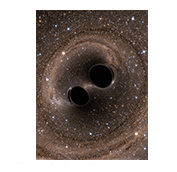 | LIGO
Black holes merge,
detects Gravity waves
CERN News
| Twenty years of designing, building and testing innovative technologies, with the strong belief that the endeavour would lead to a historic breakthrough, have come to fruition in the first direct detection of gravitational waves
The discovery opens two new areas of research for physics. One is on the general-relativity theory itself. Gravitational waves are a powerful way of testing the heart of the theory by investigating the strong-field realm of gravitational physics. Even with just this first event — the merging of two black holes — we have created a true laboratory where you can study all of this, and understanding general relativity at an absolutely fundamental level is now opening up
The second huge consequence of the discovery is that we can now look at the universe with a completely new "telescope". So far, we have used and built all kinds of telescopes: infrared, ultraviolet, radio, optical … And the idea of recent years has been to look at the same things in different bandwidths
| Gravity waves detected as Black holes merge
|
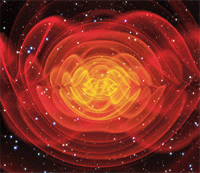 | LIGO
observes Gravity waves
Physics World
| Results and data from the Advanced Laser Interferometer Gravitational-wave Observatory (aLIGO) collaboration - which revealed last week that it had observed a gravitational wave for the first time – are already providing astronomers and cosmologists the world over with previously unknown information about our universe
While the current results have posed intriguing questions for astronomers regarding binary black-hole systems, gravitational-wave astronomy will also revolutionize our understanding of the universe during its infancy, according to cosmologist and Perimeter Institute director Neil Turok.
| Gravitational waves discovered
|
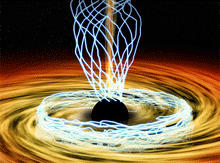 | Our Milky Way's
Black hole magnetic fields
Physics World
| The first direct evidence of magnetic fields near a black hole has been found by researchers using the Event Horizon Telescope (EHT), who have seen such fields around Sagittarius A* (Sgr A*) − the black hole at the centre of our Milky Way galaxy
While such magnetic fields have long been predicted, this is the first time that they have been detected close to the "event horizon" of the black hole
Magnetic fields near a black hole are thought to power the huge relativistic jets that emerge from many accreting black holes and blast across thousands of light-years − shaping entire galaxies along the way
| Milky Way's black hole magnetic fields
|
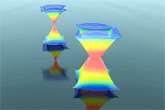 | Optical property
Exceptional points
Physics World
| A material with exotic optical properties that make it both transparent and reflective to light has been created by physicists in the US and Singapore.
The material, which resembles a thin piece of glass with tiny holes drilled in it, could be used to boost the output of some lasers and detect extremely small quantities of biological and chemical materials
| Dirac Cone
|
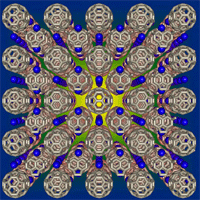 | New matter state
Bucky balls
Physics World
| A new type of metallic state of matter has been discovered by an international team of researchers studying a superconductor made from carbon-60 molecules or "buckyballs"
The team found the new state after changing the distance between neighbouring buckyballs by doping the material with rubidium. The study reveals that the material has a rich combination of insulating, magnetic, metallic and superconducting phases – including the hitherto unknown state, which the researchers have dub a “Jahn–Teller metal”
| New matter state
|
 | Quantum foundations
Einstein-Bohr
Physics World
| Physicists using the SOLEIL synchrotron in France are the closest yet to realizing a thought experiment first proposed in 1927 by Albert Einstein. A variation on the much-loved double-slit experiment, the measurement confirms an aspect of quantum theory that Einstein had sought to discredit. The SOLEIL experiment uses two excited atoms in place of the two slits of Einstein's experiment and shows that when one can determine which atom has emitted an electron, a quantum interference pattern vanishes
| Double slit thought experiment
|
 | Cosmology
Particle physics
Physics World
| As with WMAP, the previous CMB space-based mission, Planck has found almost perfect agreement with inflationary models and the standard model of cosmology
Known as "lambda-CMD" (lambda cold dark matter), this model describes a flat, homogenous universe dominated by dark matter and dark energy
"There is little doubt that we have now uncovered a fundamental truth of the universe,"says George Efstathiou of the University of Cambridge, speaking at the ESA press conference
| Planck updates WMAP
NASA WMAP info
|
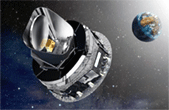 | Cosmology
Particle physics
Physics World
| Back in March, the team behind the European Space Agency's Planck telescope released the most accurate map to date of the cosmic microwave background (CMB) – the relic radiation left over from the Big Bang
As well as putting tighter constraints on the age of the universe and its contents, the findings also strongly support the idea that the early universe underwent a rapid growth spurt known as inflation
In the first tiny fraction of a second, the infant universe swelled by a factor of 1078.
Physicists' simplest explanation is that a single field – the inflaton – provided the mechanism for this exponential increase. Natural quantum fluctuations within the inflaton would have been blown up too and are now imprinted as the speckled temperature variations seen in Planck's CMB map
| Planck telescope
|
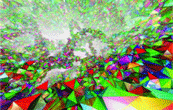 | Quantum gravity
Perimeter Institute
Audience night
| Questions from the audience to various experts
This image was computer generated, depicting quantum geometry in loop quantum gravity, from answers by Thomas Thiemann
| View the video
|
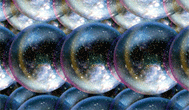 | Quantum foundations
Physics World
| David Deutsch's book "The Beginning of Infinity: Explanations that Transform the World" reviewed : You may need to log in,
According to the quantum-information theorist David Deutsch, our modern understanding of how the world works has provided us with "good explanations" that open up essentially infinite possibilities for future progress. One of these explanations is the idea of the quantum multiverse, which Deutsch discussed in the May 2011 issue of Physics World (pp34–38, print version only) and to which he devotes a chapter in his book "The Beginning of Infinity"
| The Multiverse
|
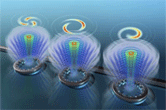 | Optics
Physics World
| Scientists learn how to twist light :
Siyuan Yu of Bristol University and colleagues are working on changing the OAM values associated with a particular wavelength by varying the refractive index of the rings electrically. Indeed, he says that they aim to produce devices that can emit different OAM values at the same time. This, he claims, could enhance telecommunication bandwidth, by increasing the number of channels available, and boost the power of quantum computers – devices, still under development, that promise much faster data crunching by processing multiple quantum states simultaneously.
"Currently, quantum computers rely on electron spin or photon spin, which only have two states, whereas OAM has many states," he explains
| Chip twists light
Science - detailed article
|
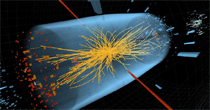 | Particle Physics
Physics World
| Watch the video of the search for the Higgs particle and other topics at CERN
Competing research methods will give a way to verify statistical searches
| Higgs particle
search at CERN
Watch Higgs video
Perimeter Institute
What is next for Higgs
|
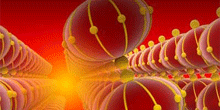 | Quantum Computing
Physics World
| Error correction technique could make quantum computing a step closer
Based on data clusters of 8 highly entangled photons
| Quantum computing moves closer
arXiV.org download
|
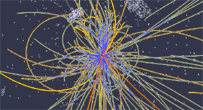 | Inner space
cosmology
theoretical physics
CERN
| CERN, the European Organization for Nuclear Research, is one of the world’s largest and most respected centres for scientific research. Its business is fundamental physics, finding out what the Universe is made of and how it works
At CERN, the world’s largest and most complex scientific instruments are used to study the basic constituents of matter - the fundamental particles. By studying what happens when these particles collide, physicists learn about the laws of Nature click the link . . .
| CERN particle collider
Short video on Jobs at CERN
YouTube CERNTV
|
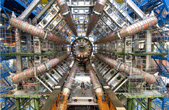 | Particles physics
theoretical physics
CERN's Atlas detector
| Data from experiments at CERN is to be analyzed to detect strange particles and confirm or disprove theories of particle physics and cosmology
| Atlas at CERN :
Particle physics
|
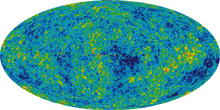 | Space
cosmology
Universe map | This is a map of the variation in cosmic background radiation for the entire universe
The remnant low temperature noise is visible between tuned stations on a TV at microwave frequencies
It is highly uniform to parts in 10,000 by degrees as you scan the heavens, but the mapped variations can help to test some theories of inflationary cosmology and quantum gravity
| Sloan digital Sky Survey
New Scientist
NASA Universe for kids
|
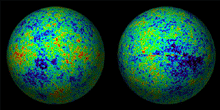 | Space
cosmology
Universe map | This is a similar more recent WMAP microwave temperature map of the entire universe shown as two hemispheres.
| Sloan digital Sky Survey
NASA WMAP info
|
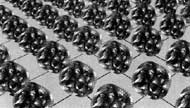 | Inner Space
cosmology
Superstrings
Calabi-Yau
spaceballs | This is an image to show tiny balls at each point in spacetime. From supersymmetric string theory, space is composed of tiny, tiny 10-dimensional strings with our 4D world appearing like ripples on the surface of a pond as viewed from below. The world below is special - curled up in tiny 6-dimensional balls called Calabi-Yau spaces.
From loop quantum gravity we have results that length, area, volume and entropy in black holes are discrete - multiples of very small units of each - everything is ultimately constrained by the geometry at small scales as depicted by the image.
| Wikipedia
Ed Witten
Perimeter Institute
|
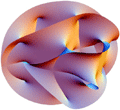 | Inner space
string theory
theoretical physics
Calabi-Yau torus
| Like the third image from the top, this is a depiction of the tiny curled up dimensions of superstring theory
The Perimeter Institute is now becoming the foremost research facility for theoretical physics
For a brief, understandable introduction to superstrings, click the link . . .
| Perimeter Institute :
Superstring theory
|
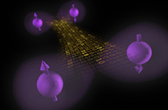 | Quantum
information theory
teleportation
of information
Star Trek
transporter
Teleport Qbits
| Some powerful theorems have proved that cloning is possible with a working quantum gate. First step to transport the state of spin or polarisation of electrons. Then to more complex structures such as 100 atom molecules, then to live objects
This sounds like complete science fiction, but is provably possible - along with saving the planet, this will ultimately enable humans to survive and explore the cosmos by using quantum compters like Orac from Blake's seven
The main difficulty is to stop the environment from interfering - hence the problems retrieving Captain Kirk at times . .
| Foundational Questions
Institute :
understanding physics
David Deutsch
|
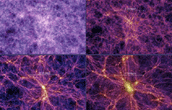 | Cosmology
Numerical
evolutionary physics
Cosmic evolution
| Many equations and theories of cosmology, small scale physics cannot be solved except numerically using computers
This graphic shows in four stages the evolution of cosmic structures
| Science Daily :
Cosmic evolution
simulation
|
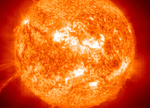 | Space
cosmology
Angry Sun | This is an infrared image of the Sun showing solar flares and the extreme heat of our star's massive fusion reactor
| Space.com
|
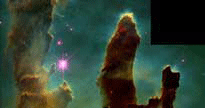 | Space
cosmology
Eagle
Nebula
M16 | Gas pillars in the Eagle Nebula M16 star-forming region
| Hubblesite.org
|
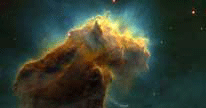 | Space
cosmology
M16 closeup | This famous image of gaseous pillars M16a dust cloud is a star nursery. The image is awesome because it is what it looks like - a star being born
Every organic lifeform also starts here because stars provide the heavier than Helium atomic elements required in living systems. Eventually stars die and give back lots of matter and energy.
| Hubblesite.org
|
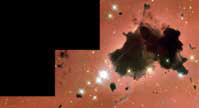 | Space
cosmology
Thackery's
globdules | These are what I call oils drops in space :
Thackery's globdules - dense opaque dust clouds in the star-forming region IC2944
| Hubblesite.org
|
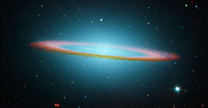 | Space
cosmology
The
Sombrero
galaxy
M104 | This is the Sombrero galaxy M104. This composite image is a mixture of visible light and the infrared image.
| Wikipedia
Hubblesite.org
|
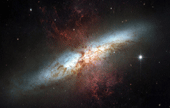 | Space
cosmology
Starburst
galaxy
M82 | Starburst galaxy M82 is remarkable for its bright blue disk, webs of shredded clouds, and fiery-looking plumes of glowing hydrogen blasting out of its central regions. Throughout the galaxy's center, young stars are being born 10 times faster than they are inside our entire Milky Way Galaxy. The resulting huge concentration of young stars carved into the gas and dust at the galaxy's center. The fierce galactic superwind generated from these stars compresses enough gas to make millions of more stars.
In M82, young stars are crammed into tiny but massive star clusters. These, in turn, congregate by the dozens to make the bright patches, or "starburst clumps," in the central parts of M82. The clusters in the clumps can only be distinguished in the sharp Hubble images. Most of the pale, white objects sprinkled around the body of M82 that look like fuzzy stars are actually individual star clusters about 20 light-years across and contain up to a million stars.
| Hubblesite.org
|
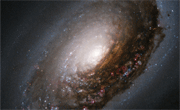 | Space
cosmology
Sprial
Galaxy M64 | This is an oblique M64 galaxy image
| Hubblesite.org
|
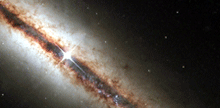 | Space
cosmology
Edge on
galaxy
NGC 4013 | Edge on galaxy NGC 4013
| Hubblesite.org
|
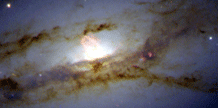 | Space
cosmology
Black hole
galaxy
NGC 4038 | Black hole blows bubbles of gas in the galaxy NGC 4038
| Wikipedia
Black holes info
Hubblesite.org
Robert Wald eprintweb
|
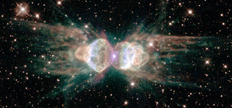 | Space
cosmology
The
Ant Nebula
Menzel 3 | The Ant Nebula [ Menzel 3 ]: reveals the "ant's" body as a pair of fiery lobes protruding from a dying, Sun-like star. These Hubble images directly challenge old ideas about the last stages in the lives of stars. By observing Sun-like stars as they approach their deaths, shows that our Sun's fate probably will be more interesting, complex, and striking than astronomers imagined just a few years ago.
Though approaching the violence of an explosion, the ejection of gas from the dying star at the center of Mz 3 has intriguing symmetrical patterns unlike the chaotic patterns expected from an ordinary explosion. Scientists using Hubble would like to understand how a spherical star can produce such prominent, non-spherical symmetries in the gas that it ejects.
| Hubblesite.org
|
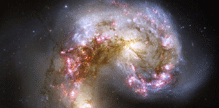 | Space
cosmology
The
Antennae
galaxies
NGC 4038
NGC 4039 | This is the Antennae galaxies NGC 4038 and 4039 tearing each other apart
| Hubblesite.org
|
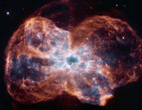 | Space
cosmology
Dying star
in galaxy
NGC 2440 | Depending on their mass, stars like our Sun can become inert white dwarfs, expand as red giants, or implode as black holes.
Large mass stars can then re-bound explode as supernovae
| Hubblesite.org
|
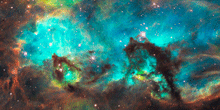 | Space
cosmology
NGC 2074
Early star
formation | This is panorama of early star formation and gas clouds
| Hubblesite.org
|
| {{ back to the top | | © NRPavs 2006 - 2023 All Rights reserved Back to NRPavs homepage | sitemap |